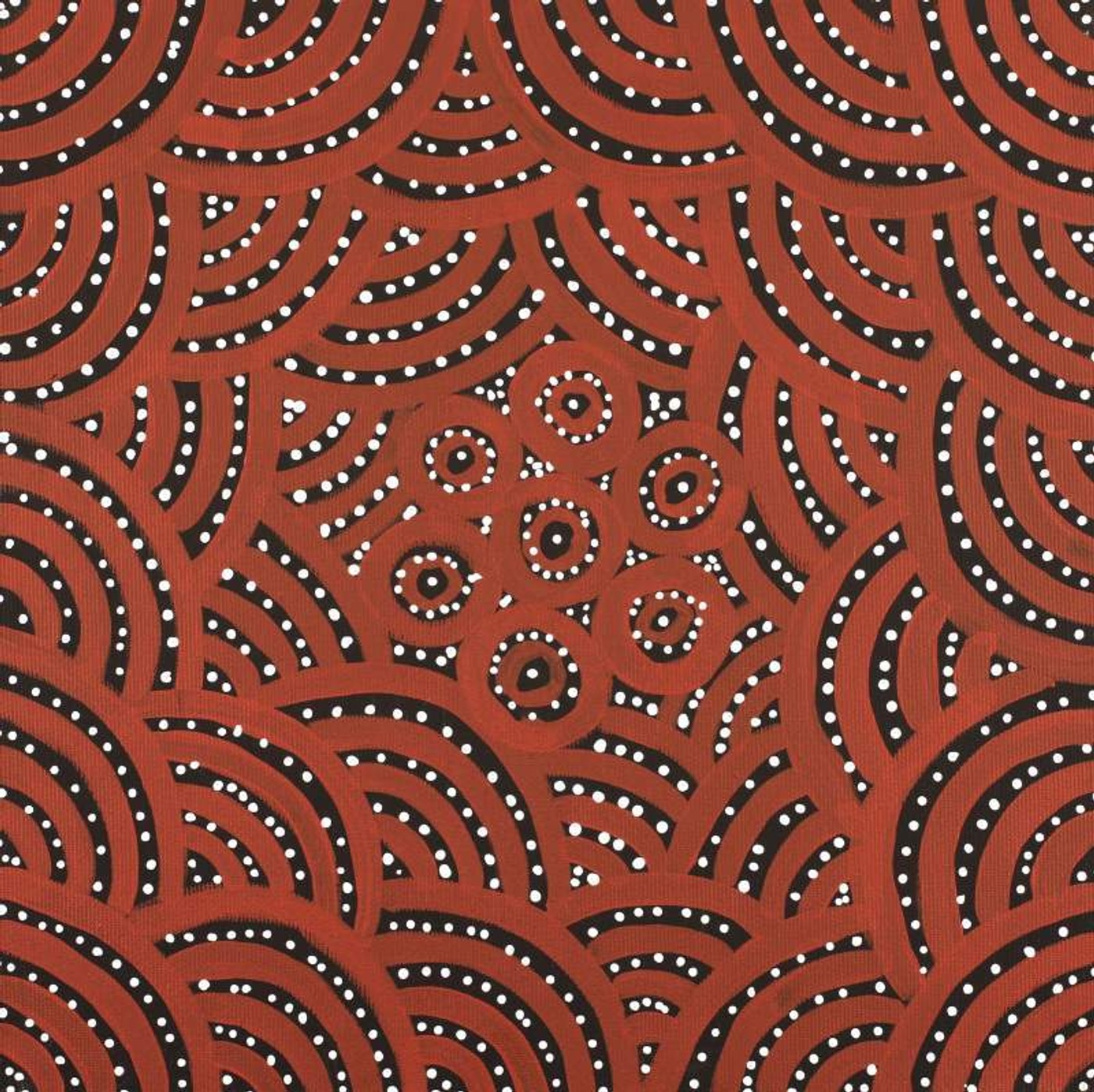Ngapa Jukurrpa (Water Dreaming) – Wapurtali
This ‘ngapa Jukurrpa’ (water Dreaming) comes from Wapurtali (Mt. Singleton), west of Yuendumu. The ‘kirda’ (owners) of this Dreaming site are Nakamarra/Napurrurla women and Jakamarra/Jupurrurla men. In the Dreamtime, a ‘marlu’ (kangaroo) was cooked at a place called Jalkirri (also called Kalkaji). The smoke from the fire formed ‘milpirri’ (cumulonimbus clouds), and it began to rain. A giant storm formed and travelled with a ‘pamapardu Jukurrpa’ (termite Dreaming) from the east to the west. The two Dreamings travelled from Warntungurru to Warlura, a waterhole 8 miles east of Yuendumu, where a gecko called Yumariyumari blew the storm on to Lapurrukurra and Wilpiri. Bolts of lightning shot out at Wirnpa (also called Mardinymardinypa) and at Kanaralji. At this point the Dreaming track also includes the ‘kurdukurdu mangkurdu Jukurrpa’ (children of the clouds Dreaming). The water Dreaming built hills at Ngamangama using baby clouds, and stuck long pointy clouds into the ground at Jukajuka, where they can still be seen today as rock formations.
The termite Dreaming eventually continued west to Nyirrpi, a community approximately 160 km west of Yuendumu. The water Dreaming then travelled from the south over Mikanji, a watercourse with soakages northwest of Yuendumu. The portion of the Dreaming that passes through Mikanji is owned by the Nangala/Jangala and Nampijinpa/Jampijinpa subsections. At Mikanji, the storm was picked up by a ‘kirrkarlanji’ (brown falcon [Falco berigora]) and taken farther north. After stopping at Puyurru, the water Dreaming travelled on through other locations including Yalyarilalku, Mikilyparnta, Katalpi, Lungkardajarra, Jirawarnpa, Kamira, Yurrunjuku, and Jikaya before moving on into Gurindji country to the north.
In contemporary Warlpiri paintings, traditional iconography is used to represent the ‘Jukurrpa’ (Dreaming), associated sites, and other elements. Short dashes are often used to represent ‘mangkurdu’ (cumulus & stratocumulus clouds), and longer, flowing lines represent ‘ngawarra’ (flood waters). Small circles are used to depict ‘mulju’ (soakages) and river beds.
